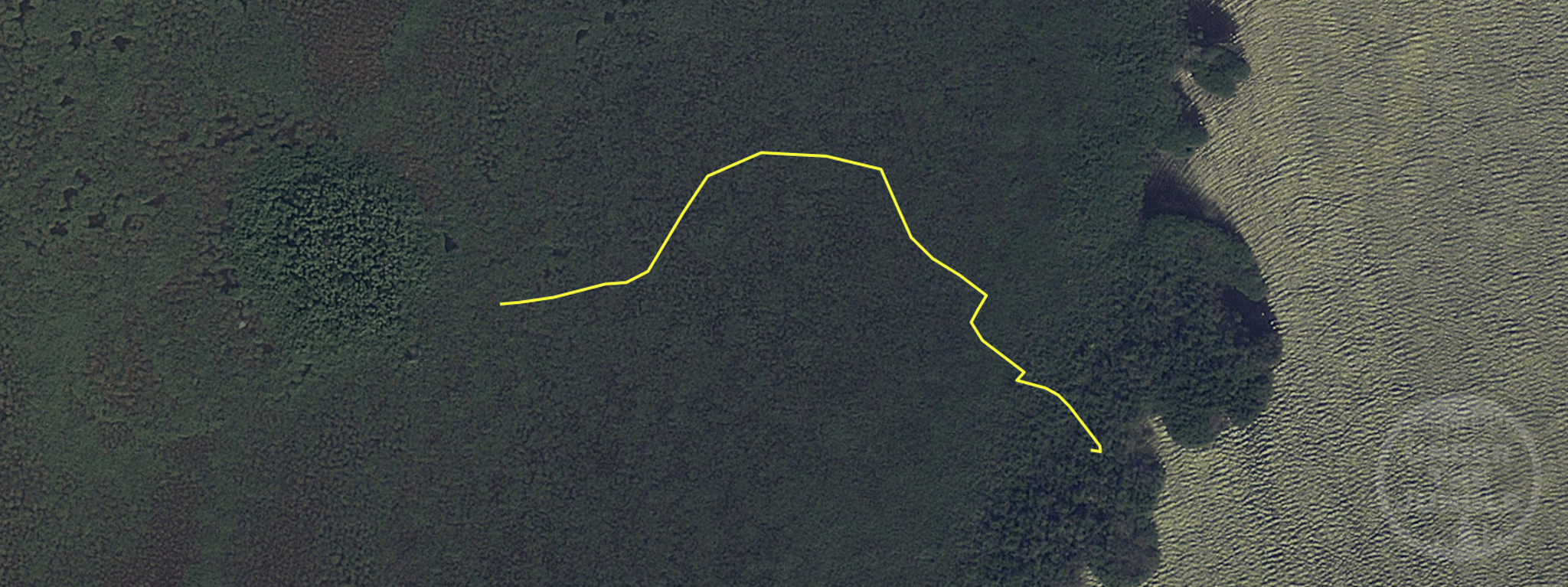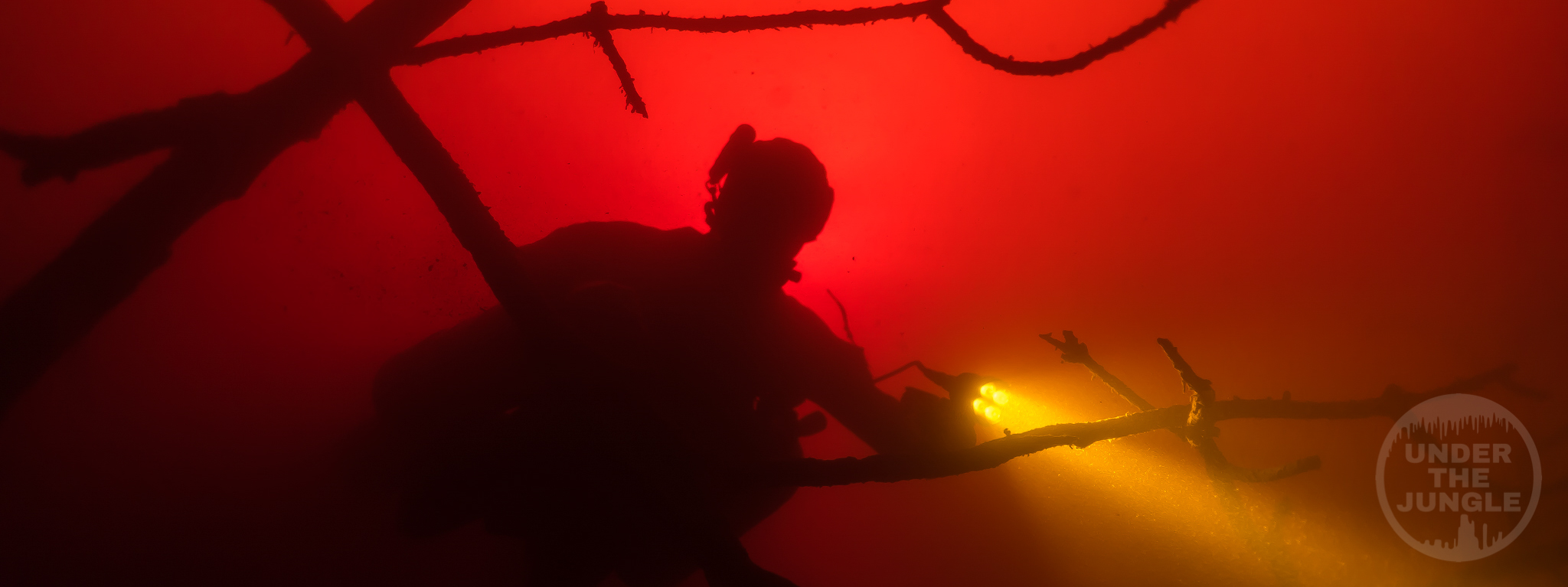
THE FIRST DIVE INTO CENOTE URSUS
By Vincent Rouquette-Cathala
Like so many aspects of life, cave exploration is all about who you know. Our friend Peter introduced us to his friend Jesus, who introduced us to his friend Luis, who lives next to a lagoon. Luis is not a cave diver, but he is observant. While fishing in the freshwater lagoon, he had noticed saltwater fish congregating around what appeared to be cenotes. This is a good indication that the holes in the lagoon floor connect to the sea through a cave system.
Barely a month, after our last trip to the region, Nat and I drove back to meet Luis and attempt initial dives into what we hoped would be a big cave system.We had high hopes. After hours of staring at Google Earth, we felt that the orientation of the cenotes and the environment was similar to that of our exploration at Pandora.
The boat ride through the mangroves to cenote Ursus.
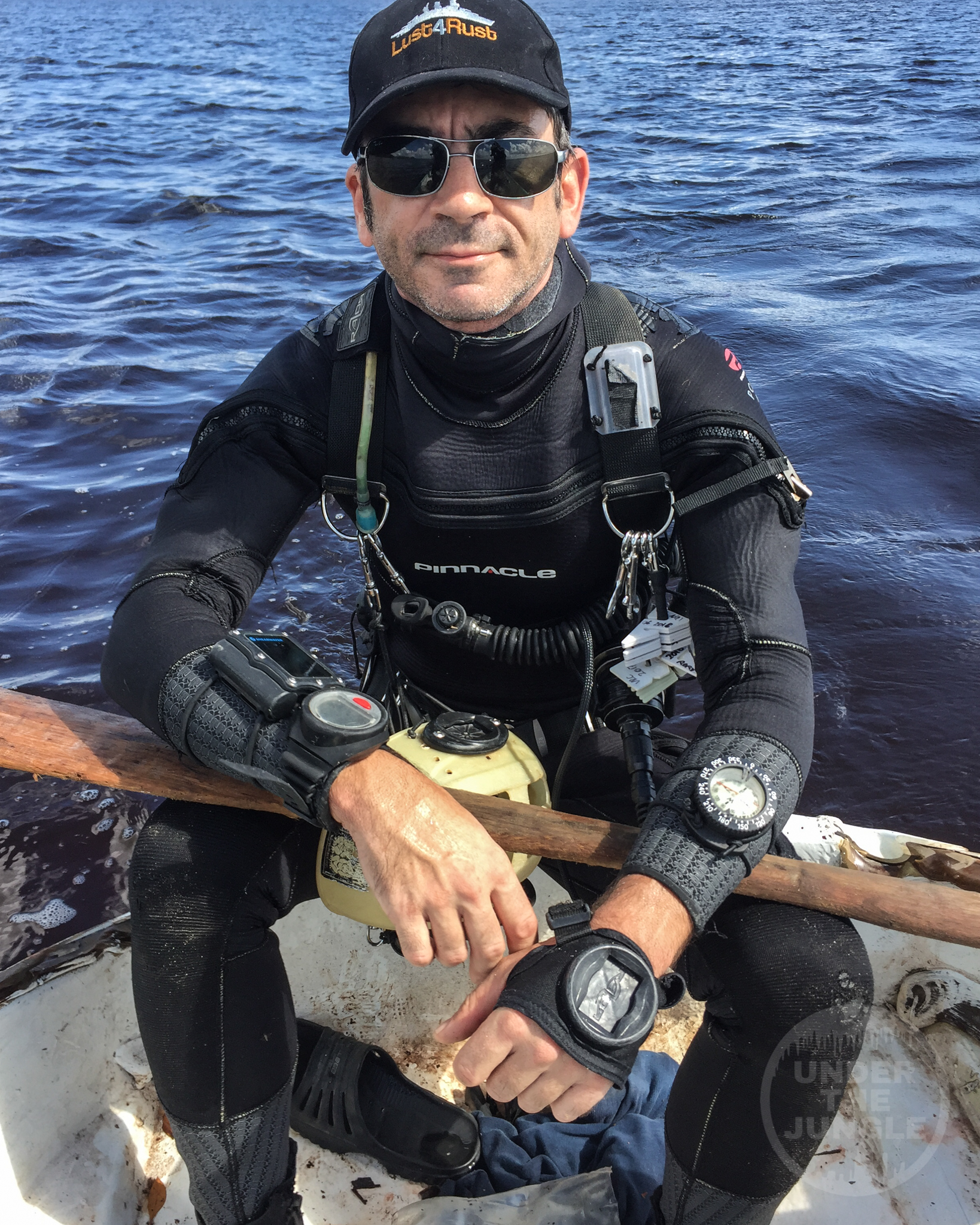
Vince on the Dingy
Autumn in the Yucatan is beautiful, and the day of the dives was no exception. The air was dry and crisp, even near the lagoon. We drove over dirt roads along the coast, but kept the windows sealed tightly to combat the reek of sargassum drying on the beach. Nothing is perfect.
We arrived at the lagoon to find Luis waiting for us. After exchanging good-morning hugs, Luis prepared his dingy while we assembled our gear. The dingy was small and not exactly sea-worthy, so we decided to go minimalist on our first scouting dive. We each brought only two Al80’s and our personal gear. Nat didn’t even bring the camera, which turned out to be a huge mistake.
Luis paddled us through a narrow channel in the mangroves. We had to lay flat on the boat to pass under over overhanging branches, causing the dingy to wobble dangerously, but with birds chirping in the tree and a gentle breeze, even just being on the boat made the day worthwhile.
The channel turned abruptly and we were in the main lagoon. The flat, dark water mirrored the sky, and we rowed through reflections of puffy white clouds to a patch of tall trees on the opposite shore. When we finally anchored near the cenote the reflection of the sky disappeared. The water at the mouth of the cenote was stained blood-red from the mangrove forest.
Overheating and excited, we clipped on our tanks as quickly as possible. The entrance to the cenote had no bedrock to use for a tie-off, so I passed my reel around a thick branch, and ran the line downwards through twisting roots and past terrified tarpon, into a red world of raspberry-colored water.
The cave dropped down along a slope of microbial mud. Between the siphoning flow, cloudy hydrogen sulfide stained water, panicking fish, and our exhaled bubbles, the visibility was only a few meters. I navigated across ripple marks on the floor, which indicated water movement and therefore cave passageway. We both searched for tie-off points and found only mangrove roots on the ceiling.
We swam over one-hundred feet into the cave before a rocky ceiling became visible and we both relaxed. It was a relief to tie the line off onto something solid. The cave kept sloping down, and the big fish kept disappearing into darkness ahead of us . . . thirty feet, forty feet, fifty feet. The tunnel grew wider. The floor ripples became deeper. At seventy feet the water grew cooler and we knew something was changing. A stalactite appeared from the murky water as if from no where, and I tied onto it, and then dropped down through swirling hydrogen sulfide into clear water at ninety feet. Suddenly we could see.
We had entered a massive salt water passage from the side. We turned west and emptied my reel swimming between meters-wide columns. When my reel was empty, Nat deployed hers and continued the line. At ninety feet we were swimming a good twenty feet above the floor, with no ceiling and often no walls in sight. At fifty minutes of dive time, we had accumulated twenty five minutes of deco and turned the dive even though we had gas, cave and line left. We swam out surveying our line and giggling like idiots.
We spent the forty-five minutes of decompression conversing excitedly using my wet notes. We just found the biggest place we have seen in our ten years of exploring together! Surfacing from the dive was bittersweet, dives like this happen only a few times in a lifetime and it’s over too soon. Nat left to dream of red caves and Goliath passages while she drove home to start a course the next day. Vince named the cave Ursus, and plotted the next day’s dives with our buddy Marcelin, who had come down to continue the project.
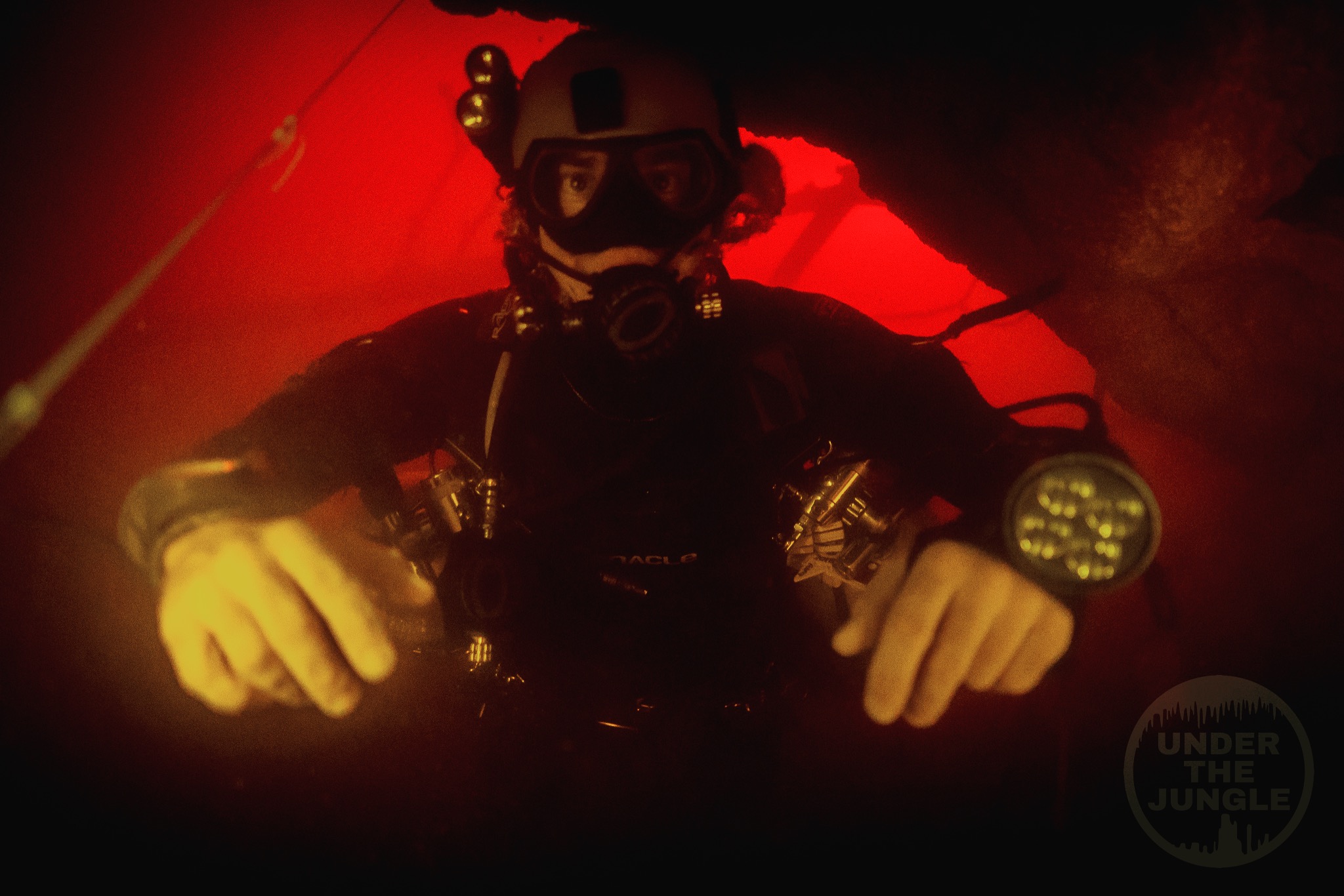
Ursus Is Stained Red from Mangrove Roots
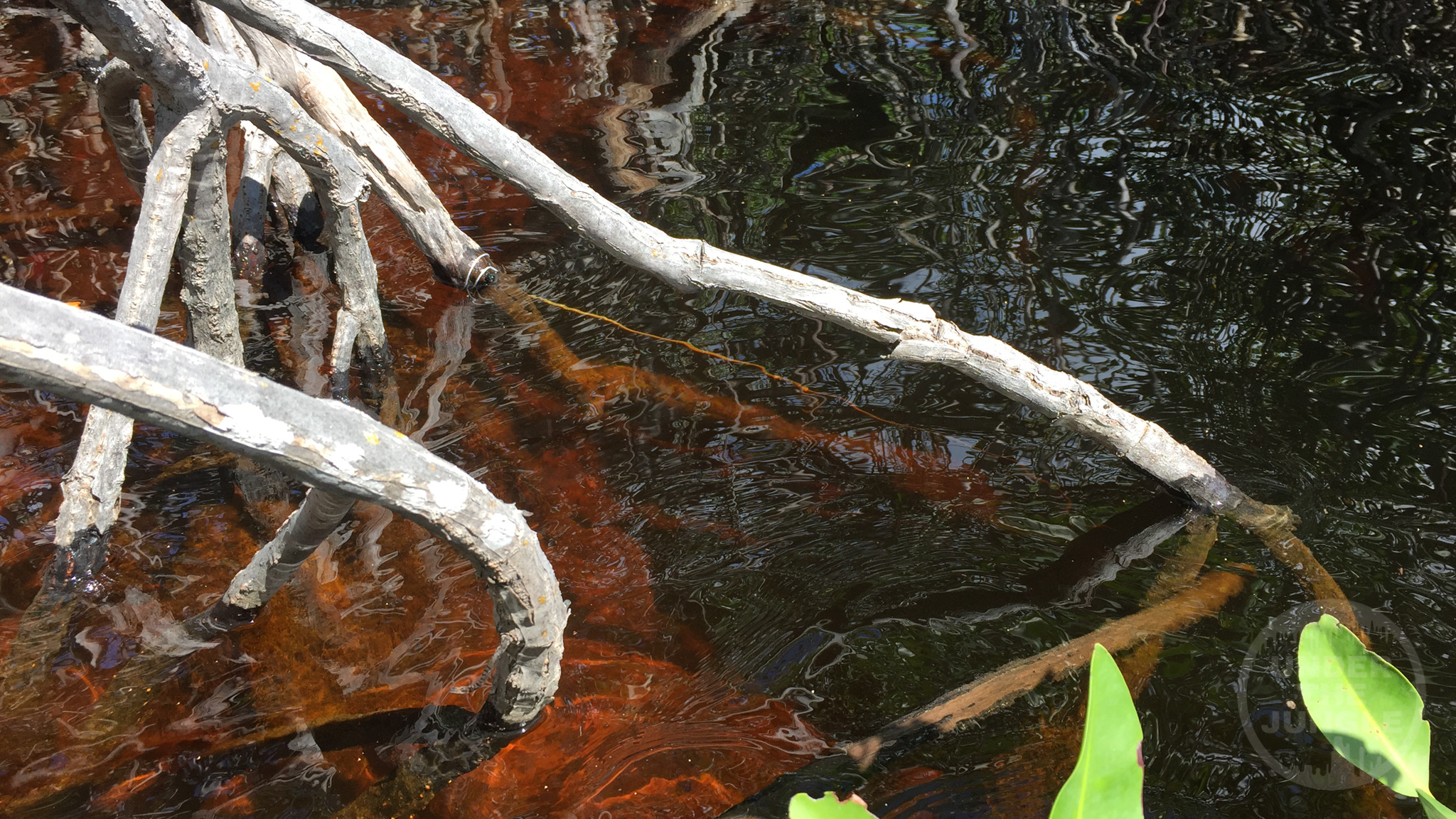
The Guideline Is Wrapped Around a Mangrove Root
